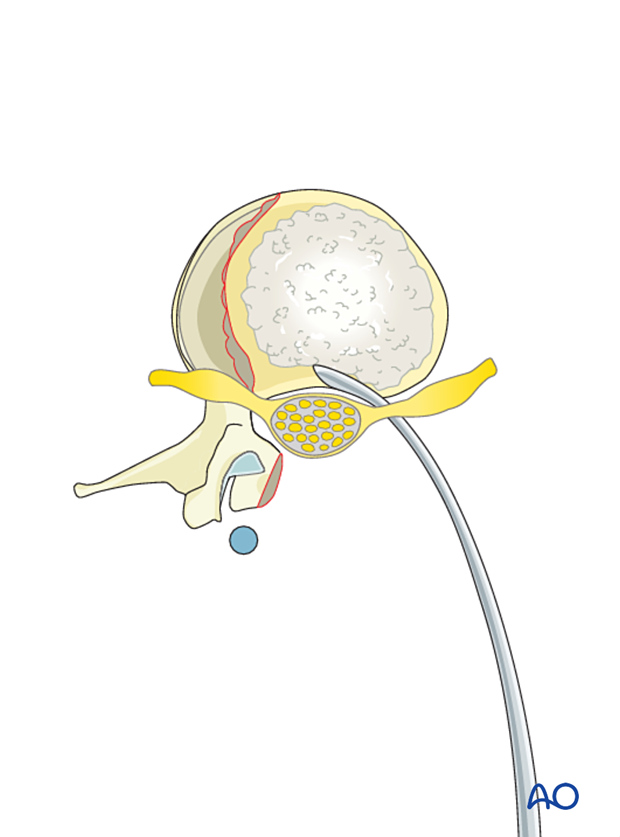PMMA application for vertebral body reconstruction
1. Preparation of endplates
In this basic technique, the application of PMMA is shown in the lumbar spine but can be performed elsewhere in the spine.
Remove any remaining disc fragments and prepare the endplates using curettes and a rongeur.
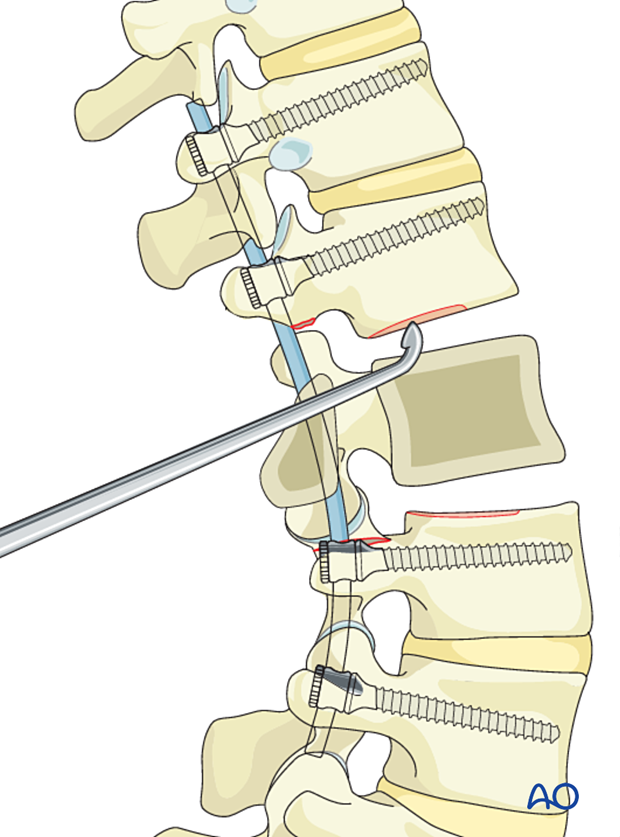
The corpectomy is completed.
Note the remaining shell of bone which was uninvolved by the tumor.
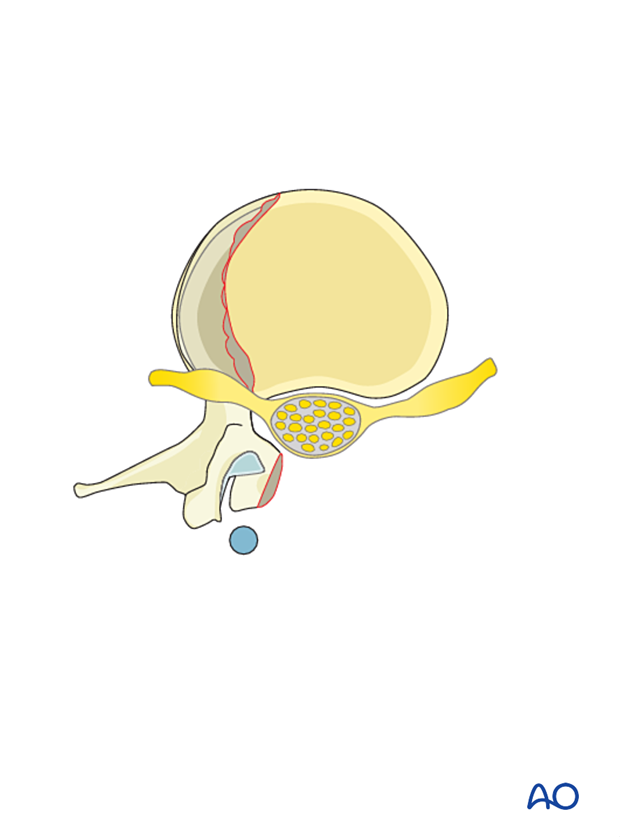
A rebar is first put in place.
Two techniques can be used to do an anterior reconstruction with PMMA. These techniques provide resistance to translation of the cement block.
1. A chest tube that will later be filled with PMMA

2. K-wires inserted in the vertebral body above and below provide support for the PMMA.
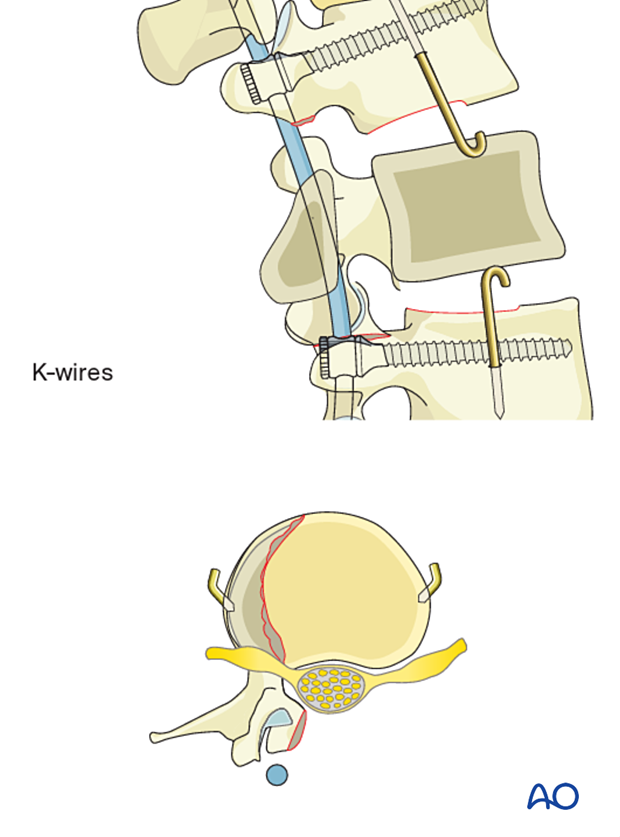
When the PMMA has reached its desired consistency, use it to fill the defect.
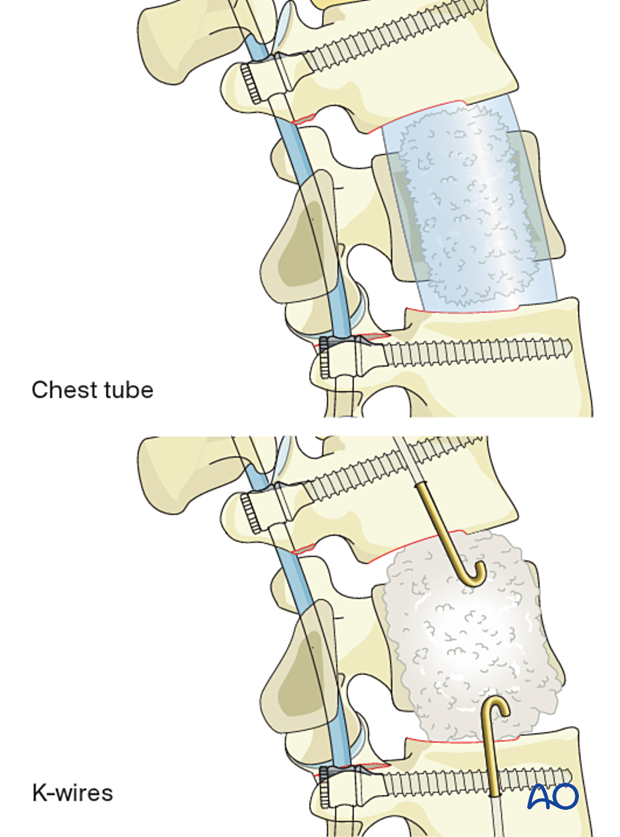
During the hardening process of the PMMA, there is an exothermic reaction that could damage the neural elements.
It is thus important to irrigate and continuously mold the cement to keep it in place until it is solid and the exothermic reaction is completed.
